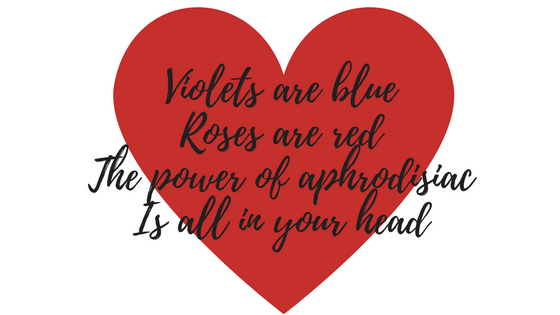Aphrodisiacs
The food of love…
Valentine’s Day approaches, and all I’m hearing is “Can food really be an aphrodisiac?” (I’m not actually, but I was quite curious myself…).
The foods which are commonly thought to have aphrodisiac properties includes:
Almonds, asparagus, avocados, banana, basil, cherries, chillies, dark chocolate, figs, garlic, honey, oysters, pomegranates, red wine, strawberries, watermelon and walnuts.
How are they supposed to ‘work’?
Their amazing powers are attributed to nutrient content or shape and aroma.
Nutrient content
The foods above contain a range of vitamins (B vitamins, vitamins A, C, E) and minerals (boron, magnesium, selenium, zinc) or other food chemicals like resveratrol (red wine) or phenylethyline (chocolate). These are reported to be involved in the production of sex hormones or to improve blood circulation.
What’s not clear is how quickly this may have an effect. So preparing an aphrodisiac packed dinner for say 7pm and hoping for any significant effect by 10pm may seem a little unlikely!
Shape and aroma
I have nothing to add! Except to say that this provides proof (if any were needed) that the ‘powers’ of these foods reside in your head!
The truth
Good nutrition is important for fertility and sex hormone production (eg oestrogen, progesterone, testosterone). The hormone most closely linked to libido is testosterone. The nutrients needed for the production of testosterone are zinc, vitamin A and vitamin D.
But this relies on consistent, 365 days a year, good nutrition. Top loading on supposedly aphrodisiac foods on the 14th February will not have any real effect. The affect from the power of the mind is another story.
I’m all for anything that gets people eating well, so go right ahead and indulge in any or all of the above foods. As for their impact beyond your health and general wellbeing, I DO NOT WANT TO KNOW. Happy Valentine’s Day!





